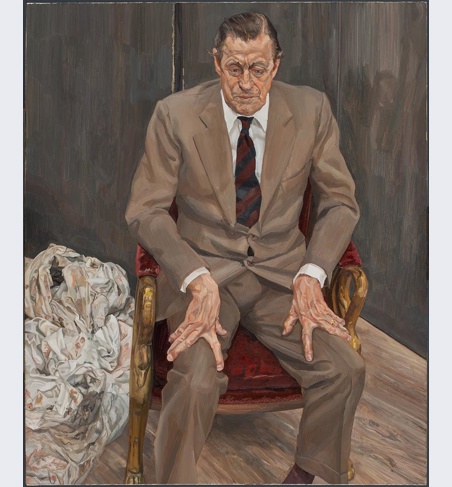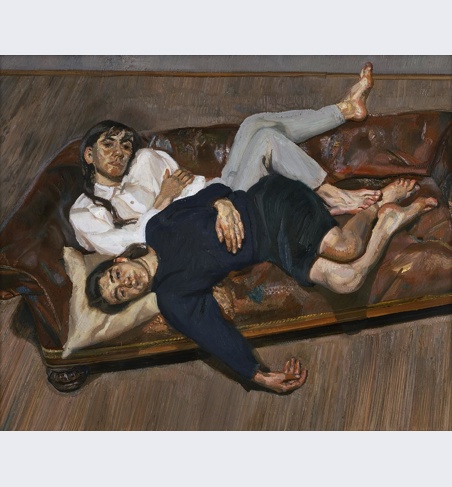Lucian Freud, 'Girl with Roses', 1947–8. Courtesy of the British Council Collection © The Lucian Freud Archive. All Rights Reserved 2022/ Bridgeman Images
Lucian Freud, 'Two Irishmen in W11', 1984–5. Private collection © The Lucian Freud Archive. All Rights Reserved 2022/ Bridgeman Images
Lucian Freud, '‘Man in a Chair (Portrait of Baron H.H. Thyssen-Bornemisza)', 1985. Thyssen-Bornemisza Collections © The Lucian Freud Archive. All Rights Reserved 2022 / Bridgeman Images
Lucian Freud, 'The Brigadier', 2003-4. Private collection © The Lucian Freud Archive. All Rights Reserved 2022/ Bridgeman Images
























